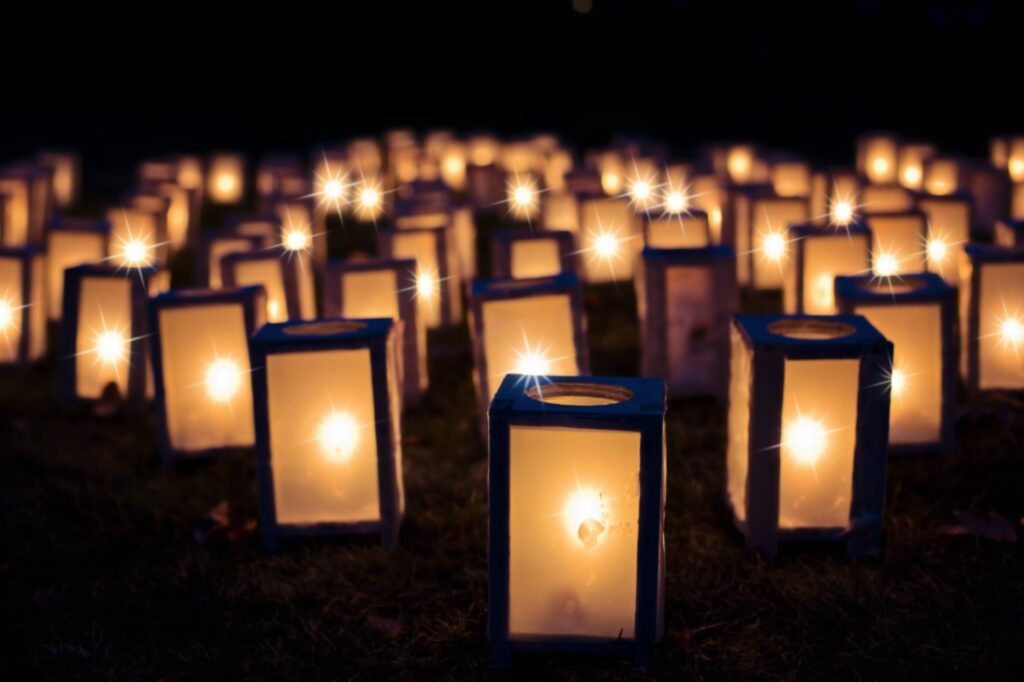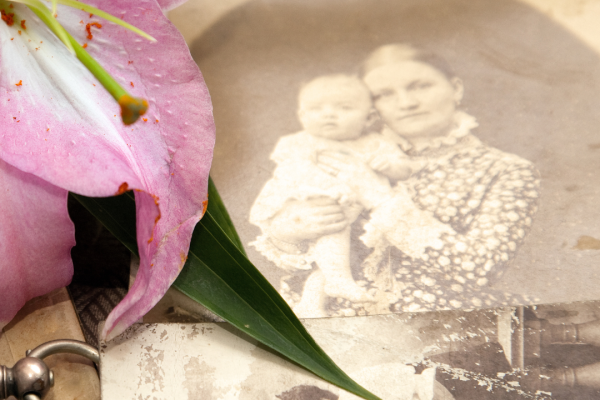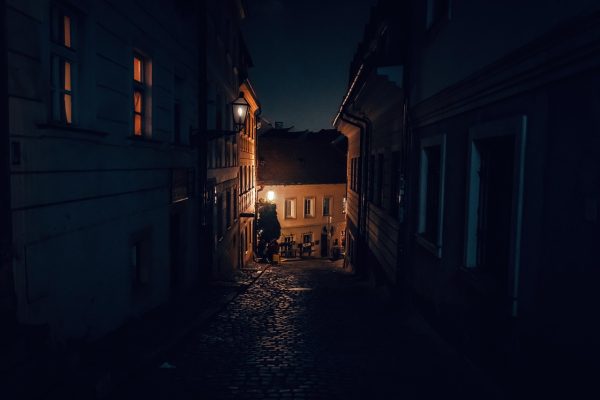This European candlemaking ritual can be performed anytime around the season of Rosh Hashanah and is a fabulous, moving ritual to do prior to the new year. It was originally published at Telshemesh.
Every year I enjoy an old ritual, a women’s ritual. I didn’t learn it from my mother, or from my grandmother—I’ve never met anyone else who does it. My source was books, my impulse was to make something with my own hands, and my own prayers. The ritual, performed by Ashkenazi women for many generations, is the making of soul candles for Yom Kippur. I lay out on the table my scissors, a roll of candlewick, and sheets of sweet smelling, colored beeswax. I open my books and read out loud.
The wicks I wrap in wax will be dedicated to beloved souls. I roll one rectangle of wax around a wick for my husband, in gratitude. One for my son, in fierce hope and fear. One for myself. Then I gently braid the three tapers together, and squeeze them tightly to join them. I press on a cut-out scrap of wax that suggests something to me—a flame, a tree, a heart. I’ve made a sturdy braided candle to keep, to use for havdalah in the coming weeks.
In the old days, soul candles were made to light the synagogue. The women of a community pressed beeswax on to wicks during the days after Rosh Hashanah. The candles were collected, brought to the shul, and lit for the Kol Nidre service.
In Ashkenazi communities, women often surrounded their ritual actions with prayers and intentions that were filled with personal, emotional content. Sometimes the thoughts were spontaneous, although shaped by tradition. Other prayers were passed orally from generation to generation. By the 17th century, printed tekhines, prayers usually composed in Yiddish, were available to accompany women’s mitzvahs. One long, very beautiful and detailed tekhine was written specifically for Yom Kippur candle making. This is a section of the Tekhine of the Three Gates, composed by Sore Bas Toyvim, probably in the late 18th century. It was reprinted widely, available in many communities. This prayer presents the spiritual intentions of the mitzvah. Here are the opening words of the tekhine: “Riboyne shel oylem, I beseech you, merciful God, to accept my mitsve of making these candles for the sake of Your Holy Name and for the sake of the holy souls” (Klirs, p. 22).
As a woman made the candles, she would focus on the neshome (neshamah), the soul, of an individual. Each wick was dedicated to a particular soul, or group of souls. In the traditional worldview of this prayer, two things happen when someone focuses on the soul of a dead person at an advantageous time. The soul can be lifted to a higher level, to be relieved of after-life suffering or brought to an enhanced experience of after-life bliss. And the soul can be asked to carry the prayers of the living, enhancing the power of those prayers. In the days before Yom Kippur, traditionally the time when our futures will be decided for the coming year, petitions for health and livelihood have a special intensity.
A beautiful give and take can be seen in our relationship with these souls, especially if, as I do, we allow ourselves to believe in the power of blessing. We ask these beloved souls to pray for us, and we pray for them: “For the lifting up of this soul … for a year of good health … may this soul feel honored and remembered … may some of your strength and wisdom be reflected in me …”
My own candle making was brief this past year. There wasn’t much time for my friends and me to be alone together. My husband and my son were home, the grandmothers were on their way over to enjoy the new baby, I. and S. had limited time. My life was full to overflowing that morning—my baby Sura was only a few hours old. I felt in myself a superwoman, awesome mother persona, holding my very new baby in the home where she was born, teaching my two friends something very old and useful that was new for them.
I chose a few parts of the tekhine to read, and added a bit of what I’ve learned. Editing can be good—I found out which parts seemed to matter the most to me.
I. and S. immediately think of their parents’ souls. I. makes dazzlingly vivid, image-filled candles. One candle for each parent, but very much connected in their stories—the candle for her mother decorated with the roses her father always presented to her. S. makes one candle, in bright colors, celebrating the vitality of her parents’ marriage. She looks forward to telling them all about it when she visits in October.
I reach for wicks to make the candle I make every year, for my intimate little family. And find I’m puzzled about making a candle for four souls, not three. Always before I’ve made three tapers and simply braided them together. I cut four identical lengths of wick, then wonder what to do with them. Soon an image forms. I make a taper for Shlomo, for Sura, for Justin, each in a different shade of blue, and braid them together. Then I cut a very long wick. I wind the taper of cream-colored wax I make around the other three—I make home for my family, surrounding them with care.
Lying on the table still is the fourth short wick. I make a taper of deep blood red wax. Then I lay out a cream-colored rectangle and roll into it wicks for many different circles of women, naming as many as I can and praying that those unnamed would also be included—a circle of my ancestors, of my teachers, of my friends … at last I add the red taper for myself and close the circles. On Erev Yom Kippur, I set aside the family candle for havdalahs and light the circles of women candle. I light the wicks for Sore bas Toyvim, for Bella Chagall, for my other teachers near and far, for my mother and her mothers, for my friends, and for myself among them. The red color flows magnificently from within the circles of cream.












